Why do old postcards matter for the understanding of port cities such as Rotterdam?
Old postcards, such as the ones presented here from the late 19th and early 20th century are important visual representations of urban space of the past. Publishers and photographers viewed and featured a world in flux. People bought and shared these views and disseminated them through the post.
The postcards are not simple visuals produced from a neutral stance. Each visual narration tells a different story of spatial change. They capture romantic maritime myths and ideas about industrial progress.
These fin-de-siècle postcards from Rotterdam, with their contingent and conflicted character, offer a window from which to view the dynamics of modernization of the port city and its representation over time.
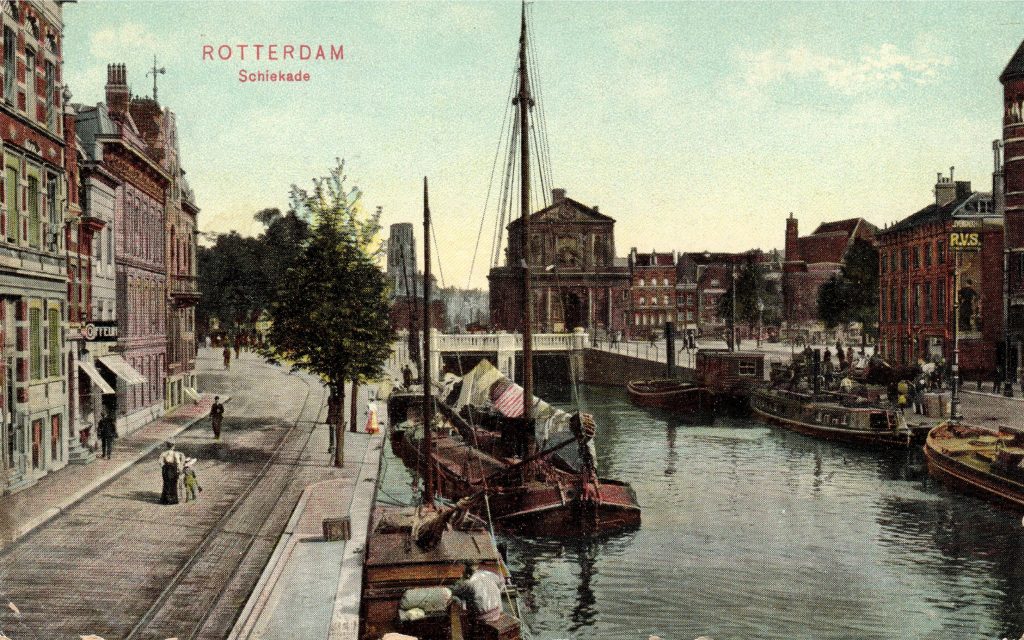
Historically, ships were unloaded in city centers. The streets were used by pedestrians and people using vehicles to move around, but they also allowed goods to be transported. Small-scale and multifunctional buildings stood alongside the canals, as shown here in the case of Schiekade. (© Source: Collection PortCityFutures).
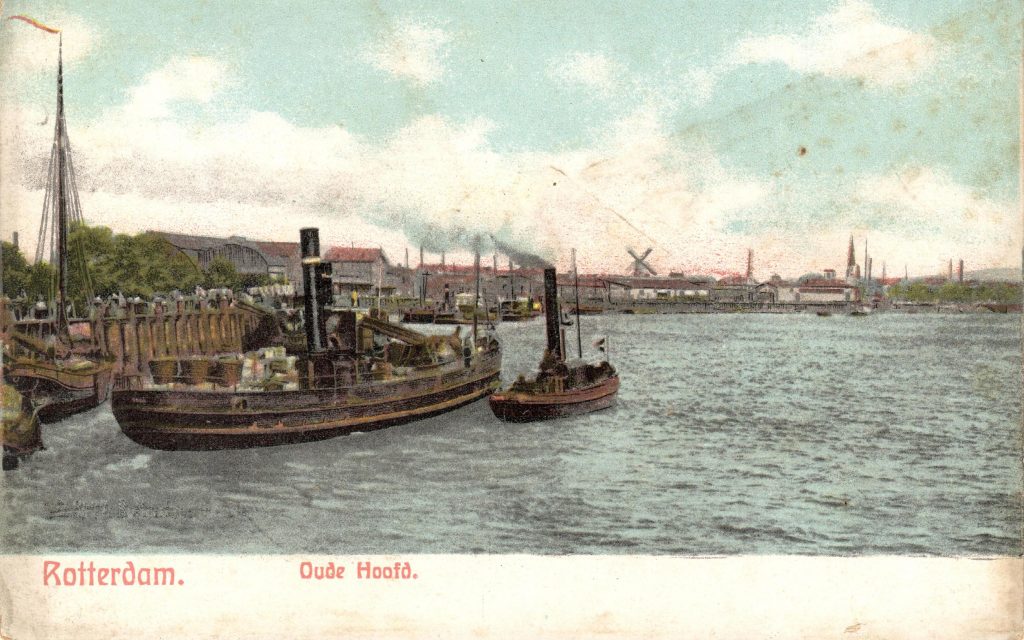
Radical improvements in the technology of transportation were one of the hallmarks of the 19th century. The shift from sailing ships to steamships lowered the cost of transportation and increased the amount of circulation between ports. In this postcard from Oude Hoofd, a single sailing ship, in the left corner, presents a contrast with much larger steamships. (© Source: Collection PortCityFutures).
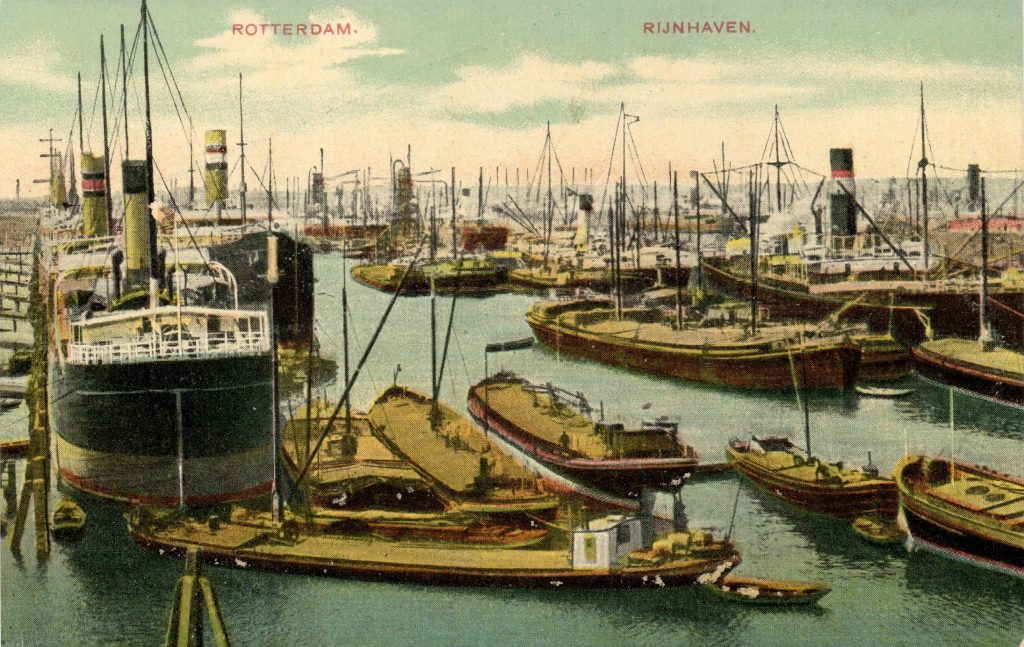
Since the industrial revolution, the increasing size of ships led to the construction of larger ports at greater distances for city centres. This postcard shows the density of maritime traffic in the Rijnhaven, completed in 1895. (© Source: Collection PortCityFutures).
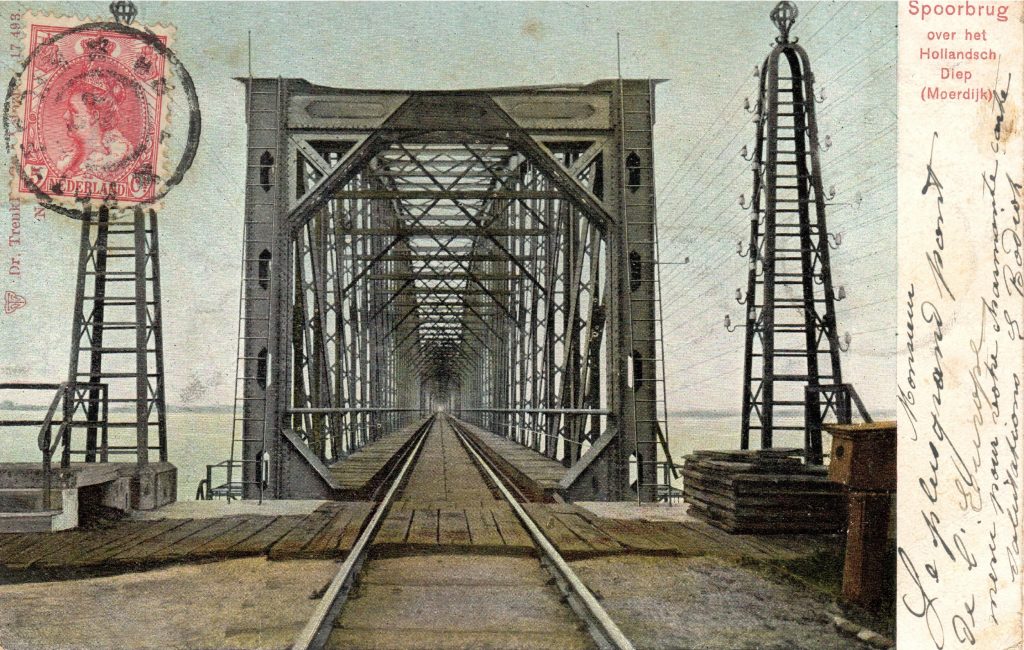
The industrial revolution eroded the romantic character of port cities, and instead encouraged awe for machinery. This Spoorbrug railway-bridge postcard has no trace of human beings. It shows the new use of iron and its capacity to span much larger distances than wood or stone. (© Source: Collection PortCityFutures).
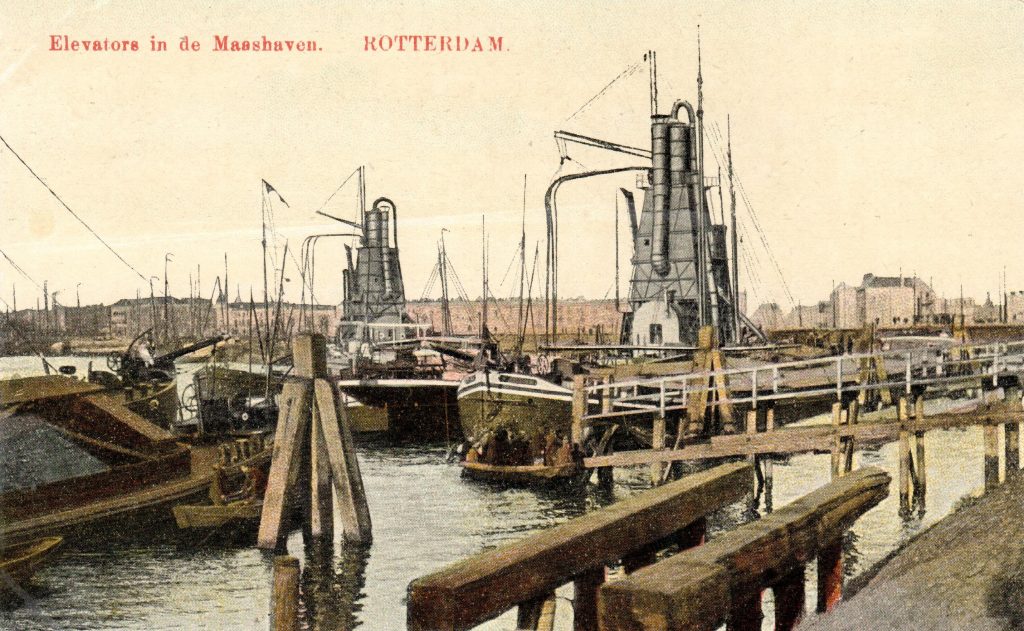
Grain was traditionally transported in bags. During the mid-19th century, the Black Sea region was the main grain supplier of Rotterdam. In 1907, the unloading of ships was facilitated by the introduction of floating pneumatic elevators in Maashaven. This postcard shows two of these elevators at the busy waterfront. The grain elevators still occupy an important place in the collective memory of the port of Rotterdam. (© Source: Collection PortCityFutures).
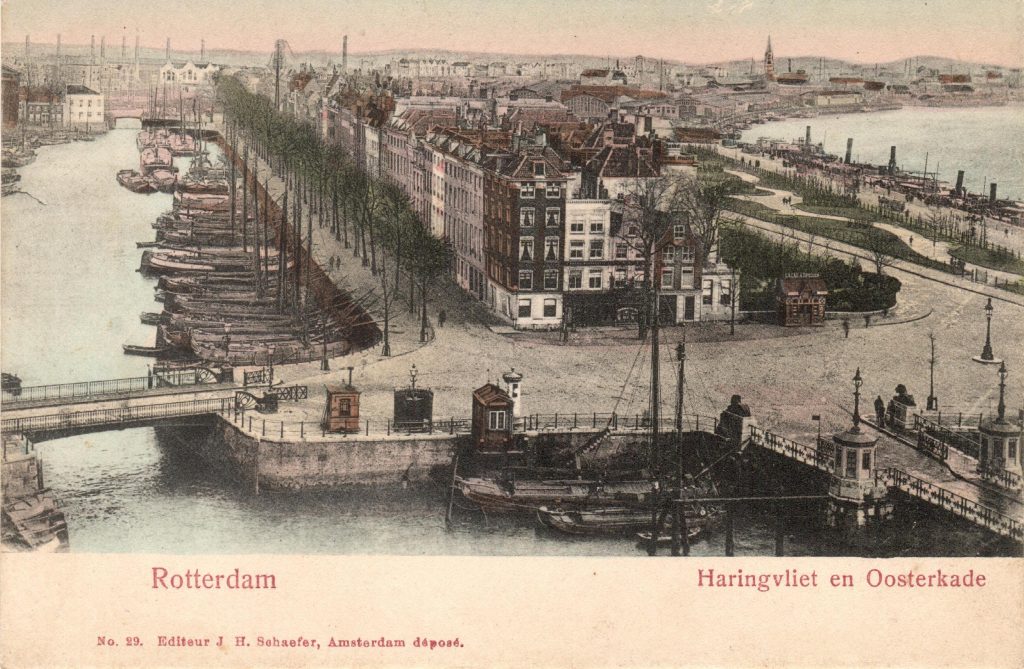
This postcard captures a tranquil day in Haringvliet and Oosterkade, with many ships moored at urban quays. The numerous electric street lights, shown in this postcard, helped reduce nighttime crime in the city centre. They became icons of safety at the very beginning of the 20th century. (© Source: Collection PortCityFutures).
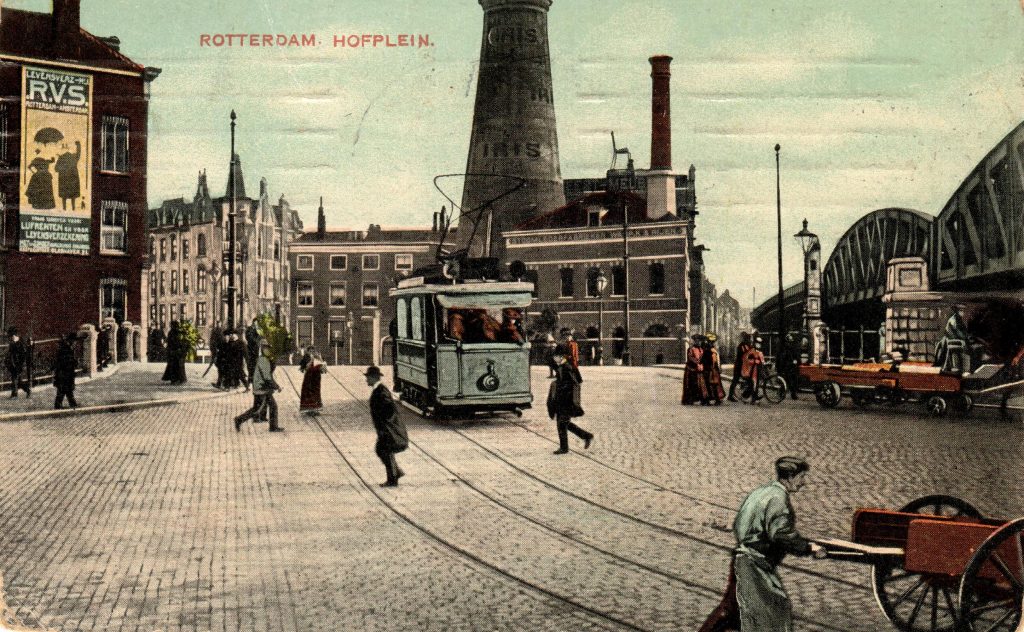
This view of Hofplein captures radical change in urban transportation. A handcart, a horse-drawn vehicle, a bicycle and an electric tramway appear in the same street space. The electric tramway enabled faster circulation and changed the speed of life. The people depicted here on the street appear to be in a hurry. The iron bridge and factory chimney are physical reminders of the changes induced by the industrial revolution. (© Source: Collection PortCityFutures).
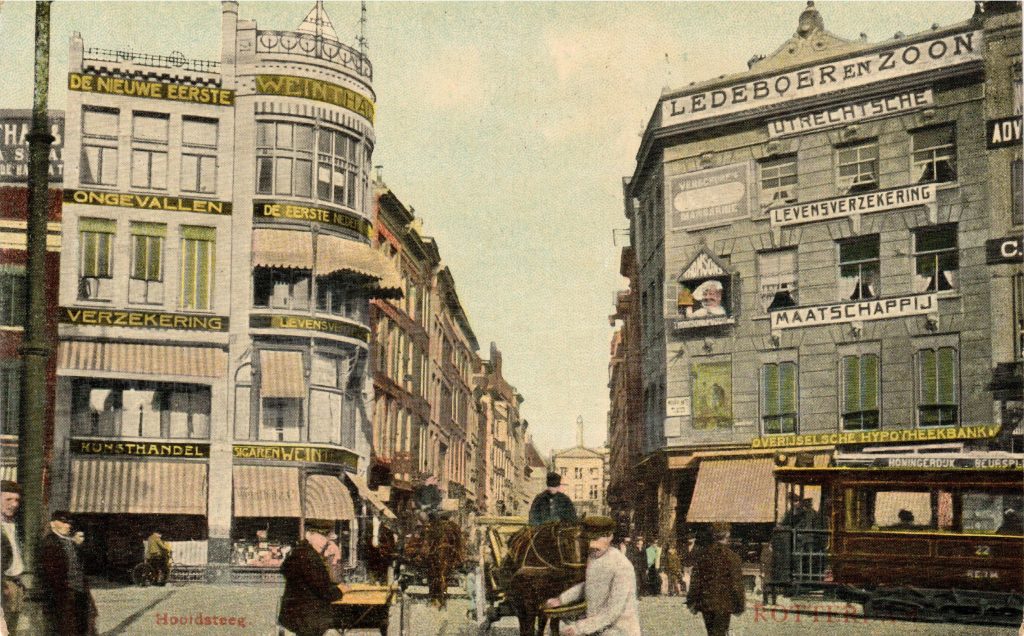
This postcard shows the modern shopping district Hoofdsteeg, with its diverse shops and institutions. The advertising signs announce the presence of a life insurance company, a bank, and the office of a textile trade company. (© Source: Collection PortCityFutures).
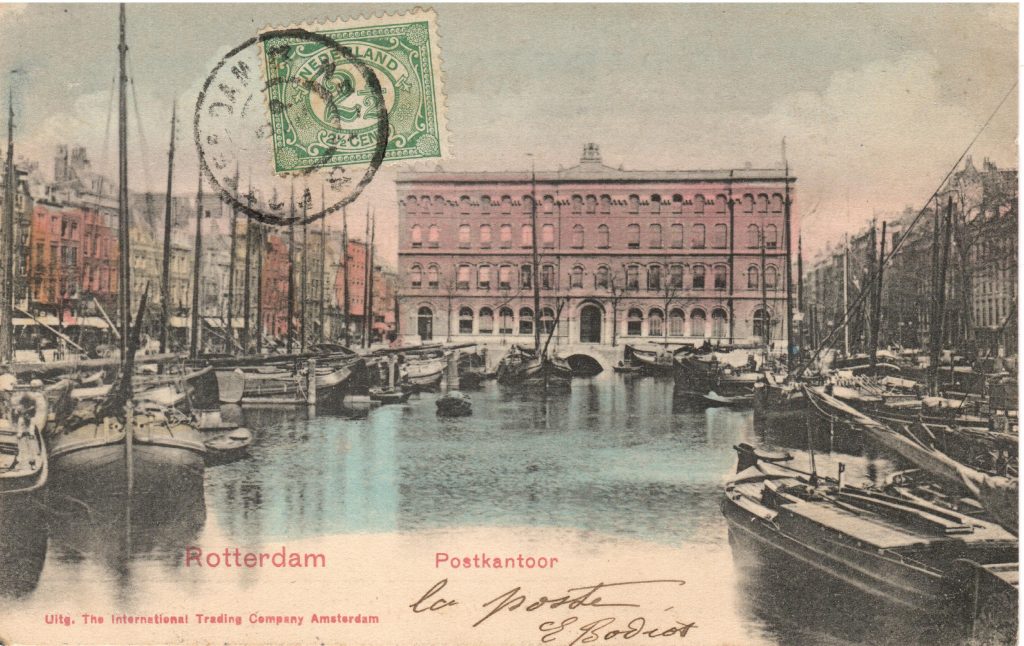
Port and city were closely connected. The harbour bordered the street next to the majestic post office of Rotterdam. The black-and-white photograph is coloured to show the crowded harbour basin and urban buildings alongside. Post offices (Postkantoor) were important part of the busy daily life of residents who looked for ways to communicate with other (port) cities. (© Source: Collection PortCityFutures).
The postcards presented here document a rapidly changing world. They circulated through post offices, including large structures like the monumental Rotterdam Postkantoor. The postcards survived in the places where they were sent, leaving a trace of changing Rotterdam around the world.
Many of the places and functions that were featured as novel, innovative and on surprising new scales have disappeared today. As we engage with yet another transition, the postcards remind us of technical, urban and cultural transformations of the past.
Head Image | In this postcard the Rotterdam panorama from the 10-storey White House (Witte Huis) which was built in 1898. At the time, this height was remarkable for Europe. The powerful imagery of large-scale infrastructure, such as the iron bridge and new steamboats, signalled an industrializing port. (© Source: Collection PortCityFutures).
Note
[1] All the postcards are from the Collection of PortCityFutures (Leiden-Delft-Erasmus).
References
Bouman, Mark J., “Luxury and Control: The Urbanity of Street Lighting in Nineteenth-Century Cities”. Journal of Urban History 14, no. 1 (1987): pp. 7–37. https://doi.org/10.1177/009614428701400102.
Carpenter A., Lozano R. ed., European Port Cities in Transition, Strategies for Sustainability, Springer, Cham, (2020). https://doi.org/10.1007/978-3-030-36464-9_15.
Grief, Avner, Lynne Kiesling, and John V. C. Nye, eds., Institutions, Innovation, and Industrialization: Essays in Economic History and Development, Princeton University Press, (2015). https://doi.org/10.2307/j.ctvw04fjd.
Kowalewski, Maciej, “Images and Spaces of Port Cities in Transition”. Space and Culture 24, no. 1 (2021): pp. 53–65. https://doi.org/10.1177/1206331218783940.
van Driel, Hugo, and Schot, Johan, “Radical Innovation as a Multilevel Process: Introducing Floating Grain Elevators in the Port of Rotterdam”. Technology and Culture 46, no. 1 (2005): 51-76. https://doi.org/10.1353/tech.2005.0011.